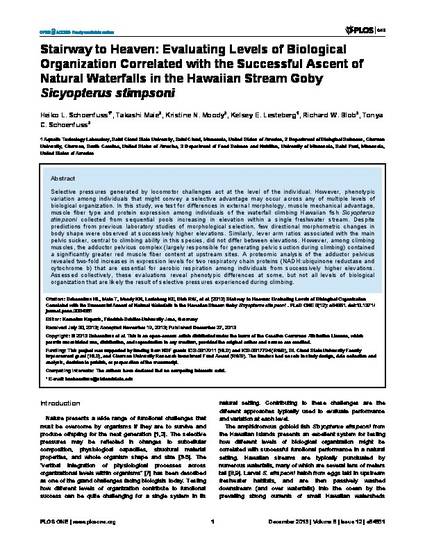
- Biology and
- Life Sciences
Selective pressures generated by locomotor challenges act at the level of the individual. However, phenotypic variation among individuals that might convey a selective advantage may occur across any of multiple levels of
biological organization. In this study, we test for differences in external morphology, muscle mechanical advantage, muscle fiber type and protein expression among individuals of the waterfall climbing Hawaiian fish Sicyopterus stimpsoni collected from sequential pools increasing in elevation within a single freshwater stream. Despite predictions from previous laboratory studies of morphological selection, few directional morphometric changes in
body shape were observed at successively higher elevations. Similarly, lever arm ratios associated with the main pelvic sucker, central to climbing ability in this species, did not differ between elevations. However, among climbing
muscles, the adductor pelvicus complex (largely responsible for generating pelvic suction during climbing) contained a significantly greater red muscle fiber content at upstream sites. A proteomic analysis of the adductor pelvicus
revealed two-fold increases in expression levels for two respiratory chain proteins (NADH:ubiquinone reductase and cytochrome b) that are essential for aerobic respiration among individuals from successively higher elevations.
Assessed collectively, these evaluations reveal phenotypic differences at some, but not all levels of biological organization that are likely the result of selective pressures experienced during climbing.

This is an open-access article distributed under the terms of the Creative Commons Attribution License, which permits unrestricted use, distribution, and reproduction in any medium, provided the original author and source are credited.